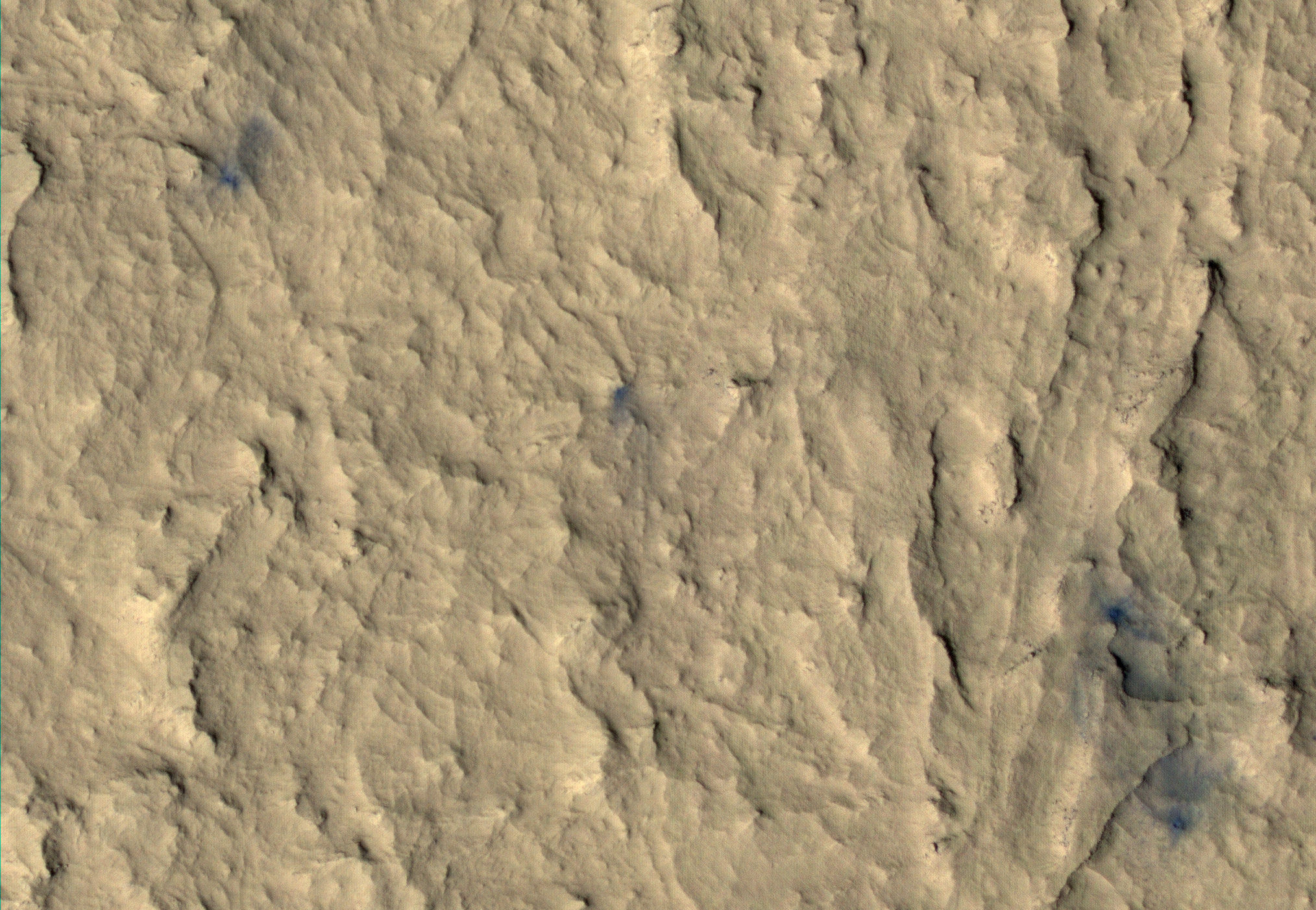During its “seven minutes of terror” landing on August 6, 2012, NASA’s Mars Science Laboratory dropped quite a few things down onto the Martian surface: pieces from the cruise stage, a heat shield, a parachute, the entry capsule’s backshell, a sky crane, one carefully-placed rover (obviously) and also eight tungsten masses — weights used for ballast and orientation during the descent process.
Two 75 kilogram (165 lb) blocks were released near the top of the atmosphere and six 25 kg (55 lb) weights a bit farther down, just before the deployment of the parachute. The image above, an enhanced-color image from the HiRISE camera aboard the Mars Reconnaissance Orbiter, shows the impact craters from four of these smaller tungsten masses in high resolution. This is part of a surface scan acquired on Jan. 29, 2013.
These four craters are part of a chain of six from all the 55 kg weights. See below for context:

Captured by MRO’s Context Camera shortly after the rover landed, the animation above shows the impact site of all six 55 kg masses. These impacted the Martian surface about 12 km (7.5 miles) from the Curiosity rover’s landing site.
A mosaic has been assembled showing potential craters from the larger ballast blocks as well as other, smaller pieces of the cruise stage. Check it out below or download the full 50mb image here.

As Alfred McEwen wrote in his article on the University of Arizona’s HiRISE site: “most of the stuff we sent to Mars crashed on the surface–everything except the Curiosity rover.”

